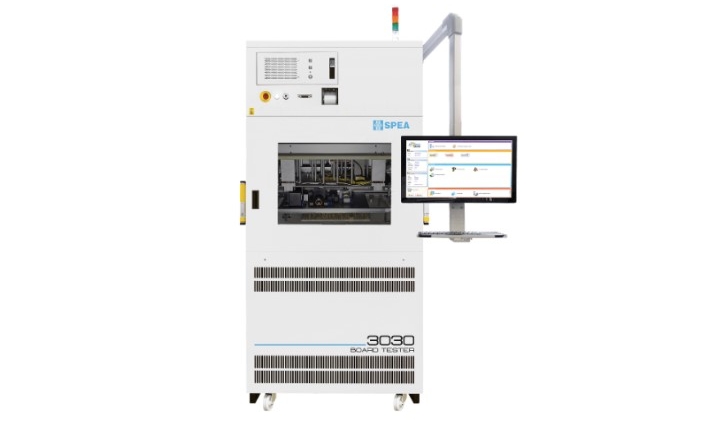Test of power electronics
Automatic testing of large and complex boards
The SPEA 3030X is designed for fixtureless testing of power electronics assemblies – including inverters, power supplies, power supplies and high density assemblies.
The tester easily and automatically transports large and heavy assemblies (10 kg and more) and tests them ultra-fast and with high precision – digital, analog, power electronics, supercapacitors, tests under high voltage or of relays as well as polarity tests and of course mechanical elements such as magnets, LEDs, displays, etc.
Furthermore, the system offers additional techniques such as optical tests, flashing or RTC calibration, etc.
Advantages
- Testing power boards with the 3030X offers great advantages:
- The failure rate during the final function test (end-of-line test) is almost zero
- Reliable and precise diagnosis at component level significantly reduces repair costs. A long and time-consuming search for the cause of the error is no longer necessary.
- Early error detection ensures optimized workflows and processes
- Test equipment for functional and end-of-line testing can be simplified, reducing overall test time.
Highlights
Automated handling of large boards
Operator-free operation, direct integration into SMT lines or test cells
Complete tests
No failures during final functional/EOL test, reduction of field returns.
High throughput
Niedrigste Testkosten, Fähigkeit, die Taktzeit der SMT-Linie einzuhalten
Multifunction tester: 100% coverage with just 1 device
From manufacturing defects analyzers to high-performance systems, SPEA board testers offer the superior solution for parametric and dynamic functional tests at component, cluster and board level. We test 100% of all electronic, mechanical and electromechanical components on the assembly.
Testperformance
The SPEA 3030X offers a comprehensive range of test techniques and detects defective components and process faults safely and reliably. This reduces the occurrence of failures or undetected faults in the function test and thus also the risk of field returns.

